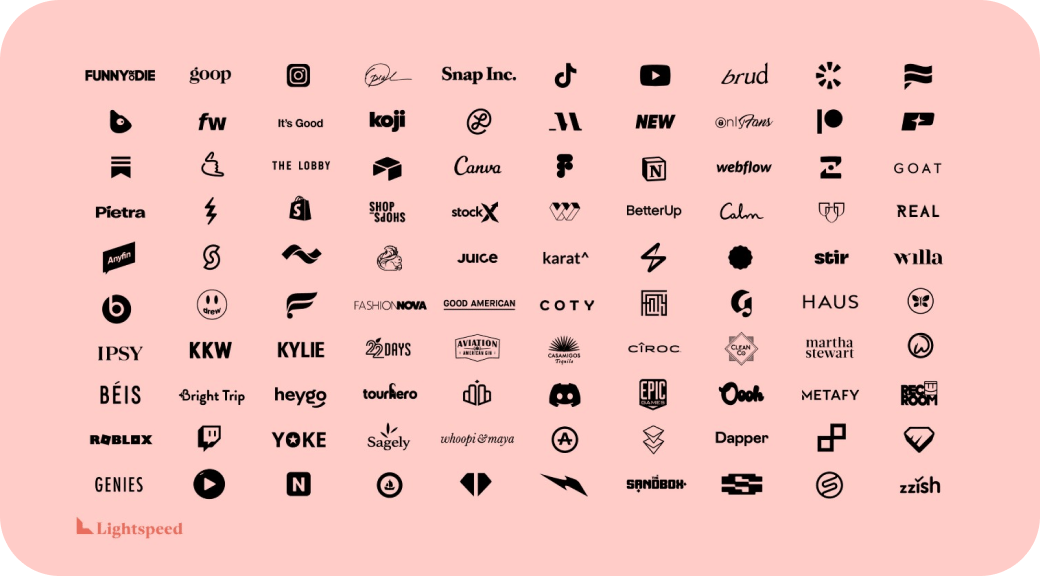Hi, hey, hello. Can you imagine A) being in a futbol club and B) that club being sponsored by the Sidemen’s chicken shop Sides? That’s what happened to semi-pro team Farmham Town FC this week. Do you think they’d also sponsor a 30 and over co-ed softball team in the PNW? Asking for a friend.

How Do You Weather a PR Crisis?

The Try Guys / YouTube
The Try (tri?) Guys gave a pretty good example this week. On Monday the group issued their first public statement following last week’s news that Ned Fulmer was having an extramarital affair with a colleague.
The five-minute video trended on Twitter, with fans and spectators alike weighing in on their response–analyzing body language, what was said and what wasn’t. Overall, the reception was mostly positive as the video included a few key elements:
It was professional. When most creators face a PR crisis, you can typically expect them to upload a lo-fi unscripted video (so much so they’ve been parodied by SNL) or the iPhone note screenshot. The Try Guys took a mature approach with prepared statements, delivered straight to the camera from their studio.
It was honest. While diplomatic, their video was not devoid of emotion. Eugene looks ready for a fight. Zach was sad, while Keith looked like a disappointed father. Each of them reflected an emotion a fan might feel, identifying themselves with the viewer and showing they’re on the same side.
It was informative. They explained when they learned about the affair, what measures they took internally, and what fans can expect from future videos— including a warning about upcoming branded videos they’re contractually obliged to post that include Ned. “It might seem a little weird, ‘cause it is weird,” Keith said.
Our Take
When you’re part of a creator group, you’re deeply aligning yourself with other people. That codependence comes with benefits—people to share responsibilities, ideas and growth with—and detriments—if one person missteps, everybody takes the hit. And when a team of employees works under you, that pressure doubles.
When you first link up as a group, the breakup probably isn’t on anyone’s minds. But proactively creating policies that the group agrees on, including guidelines to follow if one member departs—for whatever reason, can help safeguard the brand for the future.
And as the Try Guys have shown, staying true to the mission throughout a fallout shows resiliency and strength as a unit, providing fans a glimmer of hope that they’ll keep their eyes on the future.

Call Her Daddy Tops the Spotify Charts

Instagram / Spotify
TRT enthusiast Joe Rogan has been dethroned by Alexandra Cooper. With the launch of the second season of her podcast, Call Her Daddy (CHD) this week, Cooper officially leads the Spotify podcast charts.
Time-hop:
A year ago, Cooper was four months into her $60 million Spotify deal and started changing the tone of her show, bringing on more serious guests like Amanda Knox and Esther Perel.
The strategic guest list has been part of an overall evolution in Cooper—transitioning from a niche creator covering sex life to having a larger influence over culture.
Over the last year, CHD has been the setting for major moments: it’s where the Uncut Gems meme was born, it’s where Jaime Lynn Spears broke her silence on her sister’s conservatorship, and it’s where Hailey Bieber spilled the tea on her relationship with Selena Gomez.
Our Take
Creators who make it big at large media companies (in this case, Alex with Barstool) typically have a choice to make: stay at the company where they got their start, go independent, or sign with a larger company.
Alex took option 3, and it’s working out pretty damn well. While it’s impossible to know if the podcast would’ve had the same evolution with more years under the Barstool banner, she’s transitioned into a broader culture influencer and the resources she’s been able to tap into at Spotify have likely been a huge accelerant.

Sponsored by Meta
Calling All Latinx & Spanish Video Creators
Instagram has just launched Dale Tú, a new initiative aimed to help creators build sustainable businesses and grow their audiences through funding, education, partner support, and community-building.
They’re looking for the next generation of Latinx & Hispanic culture-shifters and storytellers to join this powerful community.
Program benefits include:
Access to Meta resources, tools, and product support
Community-building with fellow creators
Funding for your content on Facebook and Instagram
Sound like you or someone you know? Check out the application here—it’s free to apply and the deadline is October 12th.

What's Next for Creator-Focused Startups?

Lightspeed Ventures
Since 2020, creators have been served a swath of startups aiming to help with editing, finances, monetization, merchandise, and everything in between. Two years later, some of those businesses are having trouble staying afloat.
According to The Information, funding for U.S. creator startups in the third quarter this year sank 53% from the same period last year, marking the third straight quarter of annual decline.
“There’s no doubt an oversaturation in the space,” TechCrunch reporter Amanda Silberling said in a recent podcast. “But also an overall economic shift—ad income is down, sponsorships are down, and there’s also a decline in the amount of venture capital available to creator-focused startups.”
Our Take
The amount of creator economy startups almost feels like it matches the amount of creators 1:1. “Making it” as a startup in any field is already a low-odds endeavor, and with venture capital birthing this herd of companies all aiming to serve the same niche audience of creators, you have to wonder if the actual business opportunity got overestimated. It wouldn’t be the first time outsiders demonstrated a lack of understanding of what it actually means to be a creator.

🔥 Press Worthy
Elyse Myers starts a podcast.
Keke Palmer launches a digital network for content creators.
The Creator Science newsletter breaks down the science of becoming a professional creator.*
Hank and John Green make a rare appearance in a video together.
YouTube might make 4k viewing available only to Premium members.
Jack In The Box is looking for a VTuber to stream as Jack.
*This is sponsored advertising content.






